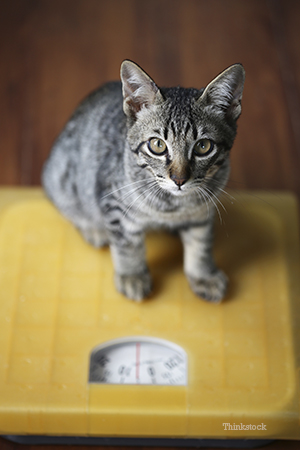Dr. Phil Zeltzman is a traveling, board-certified surgeon in Allentown, PA. His website is www.DrPhilZeltzman.com. He is the co-author of “Walk a Hound, Lose a Pound” (www.WalkaHound.com).
AJ Debiasse, a technician in Stroudsburg, PA, contributed to this article.
When an overweight cat or dog needs surgery, a question that’s often raised is, “what should we do first? Help them lose weight, or perform surgery right away?” Which do you address first, the “chicken” or the “egg?" Assuming, of course, that we are not dealing with an emergency surgery situation, the answer is not always immediately clear.
Why does obesity make surgery more difficult?
One school of thought is to address a weight problem prior to surgery. Being obese or overweight does slightly increase anesthesia risk. So having your pet shed some weight prior to surgery can decrease that risk.
In addition, a lighter body weight makes it easier to move around and go through physical therapy after orthopedic surgery.
What are the risks to waiting for surgery?
There are some drawbacks to waiting for your dog or cat to lose weight, depending on the kind of surgery:
some drawbacks to waiting for your dog or cat to lose weight, depending on the kind of surgery:
- Delaying surgery after an orthopedic injury can cause severe arthritis and will prolong pain for many weeks.
- If a dog has torn an ACL in one knee, there is a risk of tearing the ACL in the other knee because of weight shifting to the “good” leg.
- A tumor in the skin can increase in size while the patient loses weight, making it more difficult to remove or impossible to remove entirely (inoperable). If the tumor is cancerous, it can spread – or metastasize – while we wait for weight loss to occur. Larger masses are also more difficult to remove, requiring additional anesthesia and possibly increasing the cost of surgery.
Clearly there are advantages and disadvantages to performing the surgery prior to weight loss.
To summarize the benefits of performing surgery first:
- Your pet will have less time dealing with pain and often a shorter recovery.
- There is less opportunity for arthritis to develop.
- We have a better chance of removing a mass entirely and possibly lessen the chances of metastasis.
- The surgery can sometimes be less difficult.
To summarize the drawbacks of performing surgery first:
- Overweight or obese patients have a slightly increased anesthesia risk.
- Overweight or obese patients have a harder time moving around (increasing their difficulty during recovery) after orthopedic surgery.
How do I choose?
Since neither strategy is ideal, what’s a pet lover to do? Luckily for us, there is a third option.
You can actually perform the necessary surgery and address the weight problem at the same time.
As long as the clinic you choose has experienced staff and proper monitoring equipment, the anesthesia risk can be minimized.
As soon as surgery is over, the weight loss program can start. Your veterinarian can prescribe a balanced prescription food made specifically for weight loss. In some cases, a physical therapist can assist your pet with rehabilitation and weight loss.
As you can see, you don’t necessarily have to choose between surgery and weight loss. Both can be accomplished to get your pet on the road to recovery more quickly.
[Editor’s Note: Of course, ideally, your dog is already at a healthy weight. Click here to learn about other dangers of pet obesity.]
If you have any questions or concerns, you should always visit or call your veterinarian -- they are your best resource to ensure the health and well-being of your pets.
